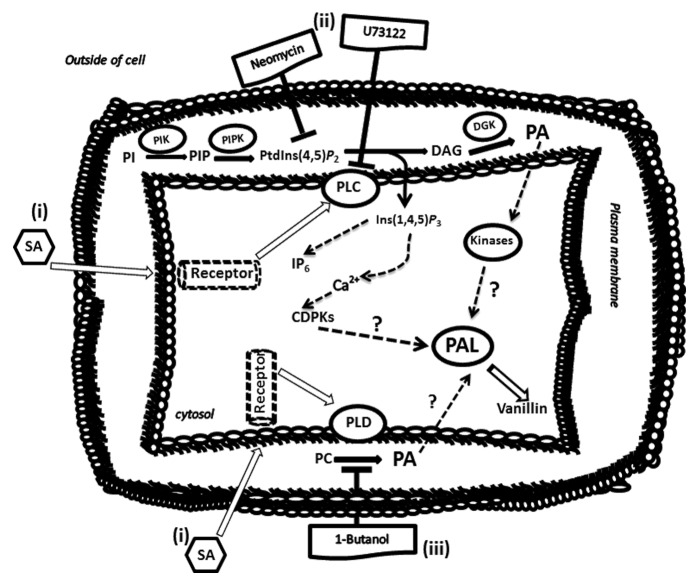Figure 5. The conceptual model for salicylic acid role on vanillin synthesis involving phospholipid signaling pathway. (i) Salicylic acid can be sensed on or near the plasma membrane by a receptor and activate a signaling cascade through phospholipases (PLC and/or PLD) function. This is followed by the regulation of PAL enzymatic activity and increased vanillin content. (ii) In the presence of U73122 or neomycin (inhibitors of PLC signaling) the levels of DAG and Ins(1,4,5)P3 (second messengers), reduced which lead to modifications of intracellular Ca2+ levels that may affect the activity of PAL as well as the promoter of reduced vanillin production. (iii) The inhibitory function of 1-butanol on formation of PA could be affecting phosphorylation processes through the regulation of protein kinases activities that may be responding to PA levels. This event also could be affecting PAL activity following vanillin production. Therefore, response to SA resulting in the production of second messengers such as DAG, Ins(1,4,5)P3, and PA produced in phospholipid signaling pathway may be involved in regulating of PAL activity, and consequently vanillin production.

An official website of the United States government
Here's how you know
Official websites use .gov
A
.gov website belongs to an official
government organization in the United States.
Secure .gov websites use HTTPS
A lock (
) or https:// means you've safely
connected to the .gov website. Share sensitive
information only on official, secure websites.
